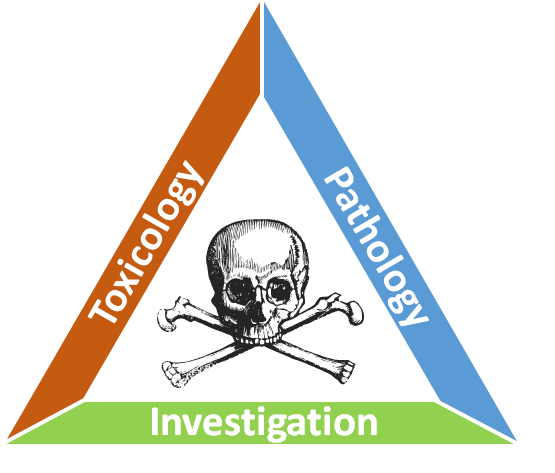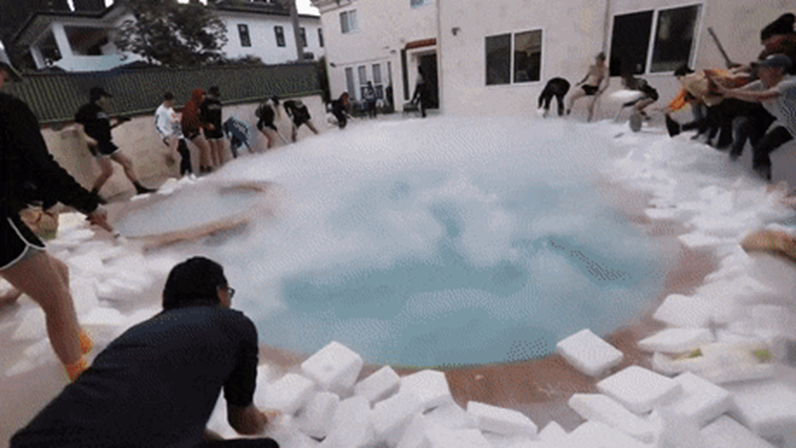I've got another tragic, but interesting, case involving a car, like yesterday's, below. It's full of forensics, science, and toxicology, so masks on and buckle up. This one is:
"Death by Dippin' Dots"*
*I had to Google Dippin' Dots. Still not sure I understand them. https://twitter.com/NaturesPoisons/status/1281265413846962187
"Death by Dippin' Dots"*
*I had to Google Dippin' Dots. Still not sure I understand them. https://twitter.com/NaturesPoisons/status/1281265413846962187
This case takes place in Tacoma*, WA, a city just south of Seattle. A man's wife drove her mother homeowner evening at 11pm. The man went to bed, but when he woke up the next morning for work, she wasn't home. Definitely odd.
*Tacoma is the "Tac" in the area's SeaTac airport
*Tacoma is the "Tac" in the area's SeaTac airport
Worried, he drove out at 4am looking for them and found his wife's car on the side of the road, just a few blocks from their house.
He made a frantic 911 call, smashed the window with a rock, and drug his wife and MIL out of the car. The wife was unconscious, his MIL dead.
He made a frantic 911 call, smashed the window with a rock, and drug his wife and MIL out of the car. The wife was unconscious, his MIL dead.
The COD of the MIL? Asphyxiation.
There was no yoga ball involved like in yesterday's case, in case you're wondering. Instead, the important detail here is that the husband was a delivery person for Dippin' Dots, an ice cream type of dessert snack.
There was no yoga ball involved like in yesterday's case, in case you're wondering. Instead, the important detail here is that the husband was a delivery person for Dippin' Dots, an ice cream type of dessert snack.
What does Dippin' Dots have to do with this? Everything.
To deliver them you have to keep it frozen - it's ice cream. Kinda. I've never had them, so cut me some slack.
And to keep them frozen, they, and the husband, use coolers of dry ice.
To deliver them you have to keep it frozen - it's ice cream. Kinda. I've never had them, so cut me some slack.
And to keep them frozen, they, and the husband, use coolers of dry ice.
Dry ice is just solid carbon dioxide, and has a temperature around -80 degrees celsius.
To store the dry ice, the gentleman had four coolers that he put in the back of his new car, that he recently purchased.
So what's the problem here?
To store the dry ice, the gentleman had four coolers that he put in the back of his new car, that he recently purchased.
So what's the problem here?
Dry ice sublimates. It goes from a solid-state straight to gaseous at ambient (non-cold as hell) temperatures.
In this case, dry ice sublimated, pushed air out of the vehicle, and his wife and MIL asphyxiated from lack of oxygen.
But let's dig into this a bit more, shall we?
In this case, dry ice sublimated, pushed air out of the vehicle, and his wife and MIL asphyxiated from lack of oxygen.
But let's dig into this a bit more, shall we?
There are a lot of questions here:
- How much much, or fast, does dry ice sublimate?
- How much carbon dioxide (CO2) is produced?
- Is it enough to be lethal?
- How much much, or fast, does dry ice sublimate?
- How much carbon dioxide (CO2) is produced?
- Is it enough to be lethal?
The FAA estimates a block of dry ice sublimates at a rate of 2% per hour in a container. Planes ship stuff all the time frozen on dry ice, so you bet your britches the FAA studies and cares about these things.
My experience: About 10 pounds per day in an insulated cooler.
My experience: About 10 pounds per day in an insulated cooler.
So now we've got to do some math. Sorry folks.
He filled his cooler the day his wife and MIL left the house, so let's assume he filled them at 11am. 11am to 11pm is 12 hours.
10#/day x 1/2 day x 4 coolers = 20 pounds = ~9000 grams
He filled his cooler the day his wife and MIL left the house, so let's assume he filled them at 11am. 11am to 11pm is 12 hours.
10#/day x 1/2 day x 4 coolers = 20 pounds = ~9000 grams
So we're estimated about 9000 grams of CO2 sublimated from solid to gas. So what is the volume of 9000 grams of CO2? Well, CO2 has a molecular weight of 44 g/mol, and a mol of gas is 22.4 liters:
[9000 g / (44 g/mol)] x 22.4 L/mol = 4,581 liters CO2
[9000 g / (44 g/mol)] x 22.4 L/mol = 4,581 liters CO2
Whew, told you there was math involved.
So how does 4500 liters of CO2 compare to the volume of a mid-sized car?
A mid-sized car has a volume of about 3200 liters, so there's more than enough CO2 to fill it.
But there's more to consider here.
So how does 4500 liters of CO2 compare to the volume of a mid-sized car?
A mid-sized car has a volume of about 3200 liters, so there's more than enough CO2 to fill it.
But there's more to consider here.
The density of CO2 is 1.98 kg/m^3, making it more dense than air (1.225 kg/m^3). So CO2 will "sink" in the car, pushing air upwards and out of the vehicle. Given the chance, it will displace all of the air.
CO2 is also colorless and odorless. You won't even know it's there.
CO2 is also colorless and odorless. You won't even know it's there.
So we know there's more than enough CO2 to fill the car. What does that mean from a toxicology standpoint?
It's a case of "confined space hypoxic syndrome" - lack of oxygen in a confined space, like water tanks, wells, mine shafts, ships.
It's not uncommon.
It's a case of "confined space hypoxic syndrome" - lack of oxygen in a confined space, like water tanks, wells, mine shafts, ships.
It's not uncommon.
So what are the dangerous and lethal CO2 concentrations?
0.04% - Normal atmosphere
5% - respiratory stimulation
10% - convulsions, coma, death (in minutes)
30% - unconscious in seconds (instantaneous)
Fatal cases are in the 14-26% range
0.04% - Normal atmosphere
5% - respiratory stimulation
10% - convulsions, coma, death (in minutes)
30% - unconscious in seconds (instantaneous)
Fatal cases are in the 14-26% range
How does one diagnose this? It's hard.
The external exam and autopsy is unremarkable (forensic pathologists, chime in here if you want).
Toxicology is unremarkable. We don't test for CO2, besides, CO2 elevates in blood after death anyways.
The external exam and autopsy is unremarkable (forensic pathologists, chime in here if you want).
Toxicology is unremarkable. We don't test for CO2, besides, CO2 elevates in blood after death anyways.
So autopsy and toxicology isn't helpful. Now what? This is where you need to rely on your investigators, looking for things, like coolers of dry ice in the car.
This is what I made and use in my death investigation talks (it's like those "fire triangles"...you need all three.
This is what I made and use in my death investigation talks (it's like those "fire triangles"...you need all three.
Clearly, this is an unfortunate accident, a combination of dry ice coolers and sublimating carbon dioxide, and perhaps unaware of the danger it poses.
So anyways, just be aware of dry ice and enclosed spaces. If you're a writer, this is a great plot element!
So anyways, just be aware of dry ice and enclosed spaces. If you're a writer, this is a great plot element!
Additionally, because this is topical right now - you aren't going to become ill or die from carbon dioxide (exhaled breath) building up magically behind your cloth mask. It's a silly premise if someone takes even 1 second thinking about it.
Also, don't be these people. Dry ice in water looks fun...oooh, clouds..but remember the density of CO2? It will settle on the surface of the water, displacing air.
PEOPLE HAVE DIED DOING THIS!
PEOPLE HAVE DIED DOING THIS!
So if you enjoyed this thread on science, forensics, and toxicology, please retweet.
Wear a mask and have a great weekend!
Wear a mask and have a great weekend!

 Read on Twitter
Read on Twitter




